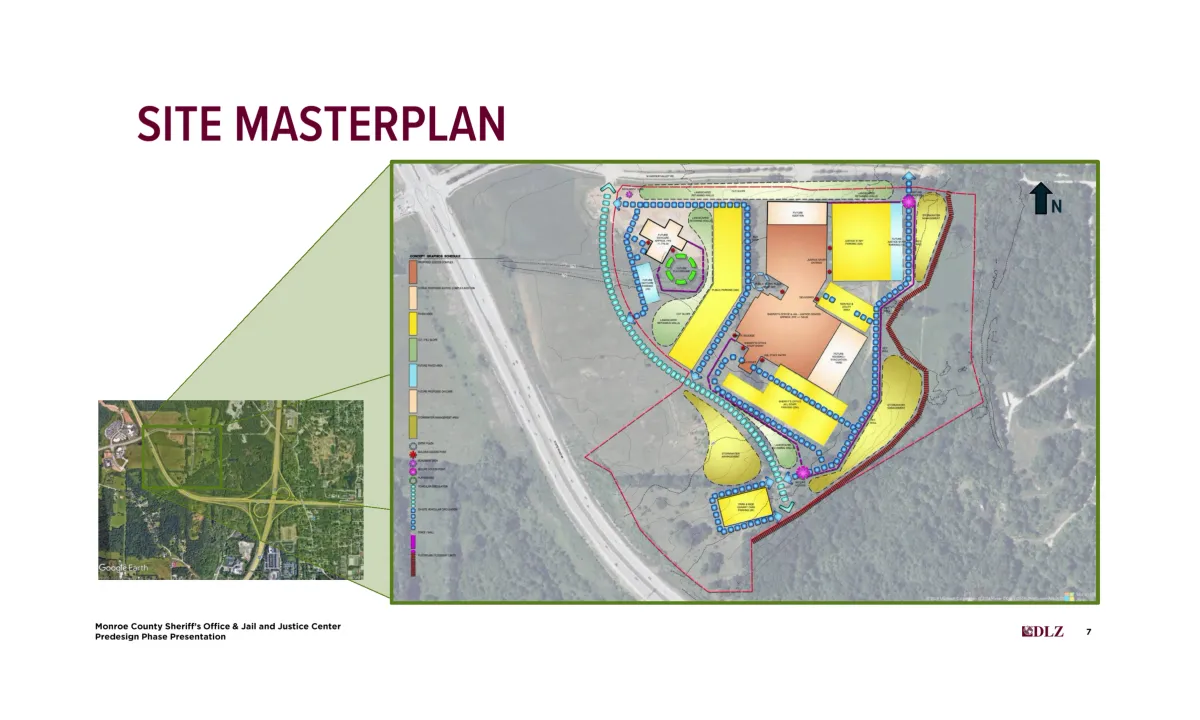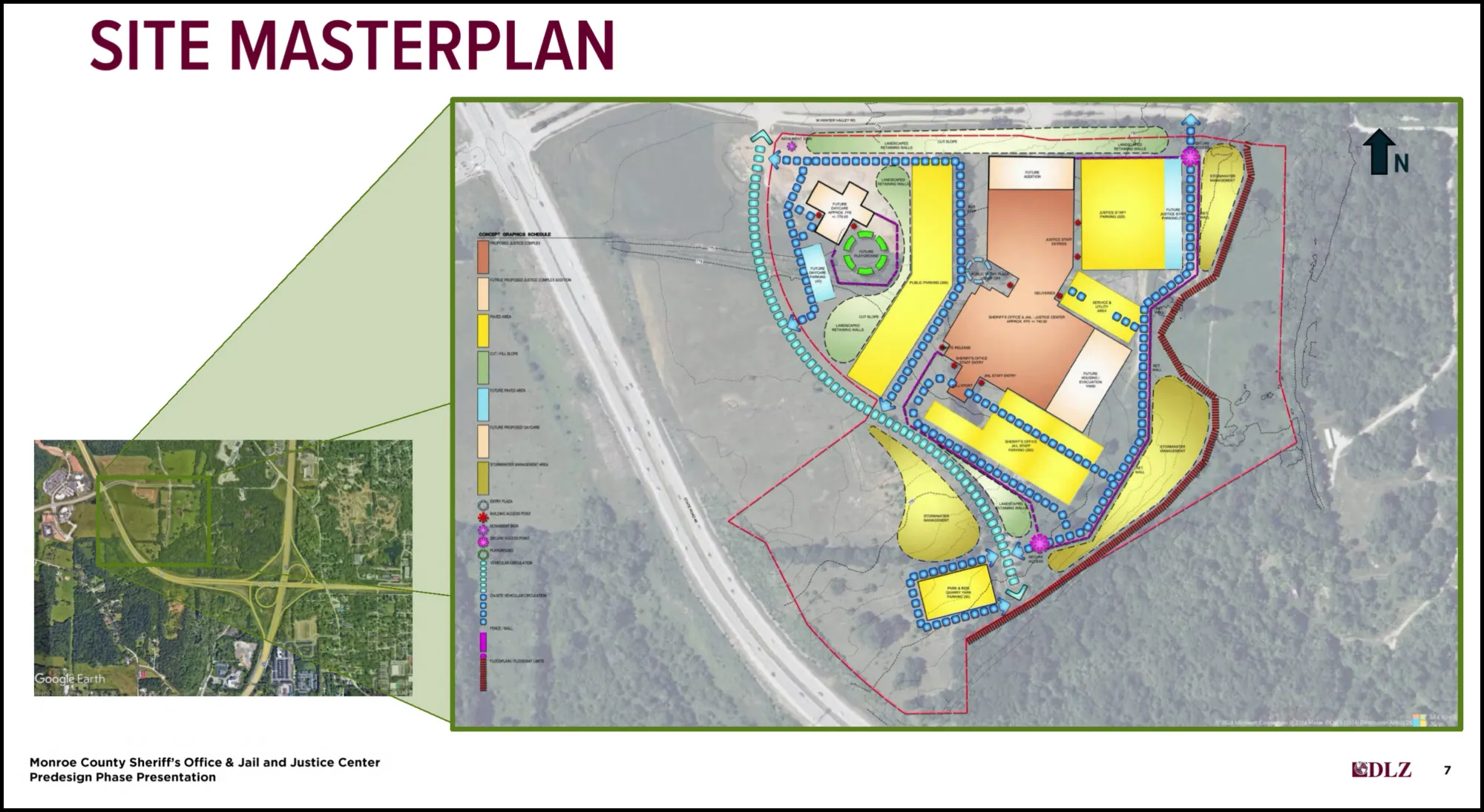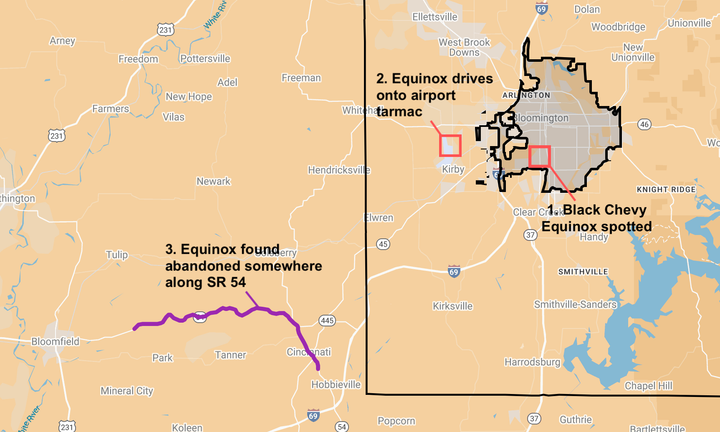Monroe County jail plans faced monthslong delay, sharp cutbacks after projected costs rose above $260M
Monroe County’s plans to design a new jail were set back for months because of cost estimates that grew to more than $260 million by mid-spring, well over the planned budget. A meeting for public presentation of schematics set for May 29 didn’t take place and might not happen until Aug. 19 or later.


Monroe County’s plans to design a new county jail were set back for months because of cost estimates that ballooned to more than $260 million by mid-spring, well over the budget that county lawmakers had targeted since summer 2024.
In February, the design consultant DLZ Corporation estimated that building a 500-bed facility would cost $237 million. That cost was already substantially higher than projections DLZ had given the county in 2024, and gave some councilors pause because it was also more than $7 million above the maximum bond issuance recommended by the county’s financial consultant.
The county commissioners approved the project to move forward from the predesign phase, and DLZ told the county that cost estimates and schematic designs would likely be presented at a May 29 public meeting.
But the May 29 meeting did not take place. Over the next several months, the costs kept climbing. By May, the county expected a price tag between $260 million and $280 million.
The rising costs forced the county to quickly pare back elements of the jail that had been planned in the predesign phase. County departments then had to be informed of the cuts—another flight of meetings and potential changes that pushed DLZ’s plans to present schematic designs back to Aug. 19 or later.
Details of the rising costs and the lengthy delay were described in a July 8 email from Chris Ciolli, with Weddle Bros., to county commissioners’ administrator Angie Purdie, which summarized a call between Ciolli and Purdie that took place the previous day. Purdie forwarded Ciolli’s email to the commissioners, the county council, and legal staff, also providing them with a summary of meetings that the county had held since learning of the surging costs.
Purdie later shared both emails with the B Square.
The future of the jail has loomed over Monroe County government since 2008, when the American Civil Liberties Union of Indiana filed a class-action lawsuit against the county commissioners and the sheriff’s office, alleging that overcrowding had created hazardous conditions for prisoners.
Monroe County settled with the ACLU in 2009, agreeing to notify the ACLU when the prisoner population tops the jail’s capacity. The settlement has been extended through the start of 2026, but the county has yet to start construction on a new jail.
This year, the county finally seemed set to make major progress toward a new jail—but swelling costs haven’t been the only obstacle. In April, the Indiana legislature passed a new law that restricts how much local income tax revenue can be dedicated toward bond payments. The new limits could jeopardize the county’s ability to construct a new jail on anything close to the planned timeline.
The predesigns that were released in February came after an extended process of consultation with the many county departments that would be housed in the jail and an adjoining justice center—including the sheriff’s office, the clerk’s office, the prosecutor’s office, and parts of the county court system. The original plans called for a 271,482-square foot complex.
DLZ planned to send schematic designs to construction manager WGS—a collaboration between Weddle Bros. Building Group, Garmong Construction, and Smoot Construction—on April 30 so WGS could generate cost estimates.
But the higher costs forced changes that Ciolli described in his July 8 email as “a significant project scope vs project budget reconciliation exercise.”
DLZ, WGS, and county staff managed to bring the anticipated costs down to less than $225 million, the county’s current budget for the project.
Staff from the two firms and the county then met with county commissioner Julie Thomas, county council president Jennifer Crossley, president pro tempore Peter Iversen, and member Trent Deckard on June 3 to describe the changes.
The lawmakers decided to show the new designs to county departments before a planned public presentation in August. The meetings would give the departments “an opportunity to see the changes and offer an alternative design that did not increase the cost,” Purdie wrote in her July 16 email.
Monroe County prosecutor Erika Oliphant wrote in an email to The B Square that the prosecutor’s office was notified on June 16 that the project was over budget. On June 27, her office met with DLZ, Thomas, Crossley, and Deckard to discuss changes.
“Our space in the new design is significantly smaller, not only because the building became smaller, but also because a large public bathroom was added in the hallway outside of our office and took some footage from our originally designed space,” Oliphant wrote.
She added that her office has “worked with DLZ to adjust the design to meet our needs within the smaller space now available to us under the new constraints.”
County clerk Nicole Browne wrote in an email to The B Square that her office and others were regularly involved during the predesign phase, but that she was not consulted again before being told of the changes.
The clerk’s office lost 30% of the storage space and 15% of the office space that it had initially requested, according to Browne.
Citing staff numbers and the statutory mandate for the clerk’s office to maintain both court and clerk records, Browne wrote that “the cuts will most definitely impact the Clerk’s ability to maintain/facilitate operations under one roof.”
“The fairest thing I can say about the changes is that I am shocked but not surprised because, sadly, I’ve seen this movie before,” she added. “I’ve never been to school for architectural design, but I do understand that costs don’t, typically, go down.”




Comments ()